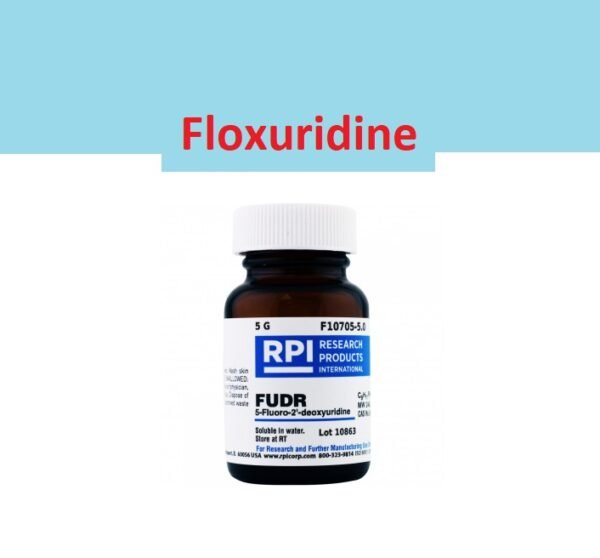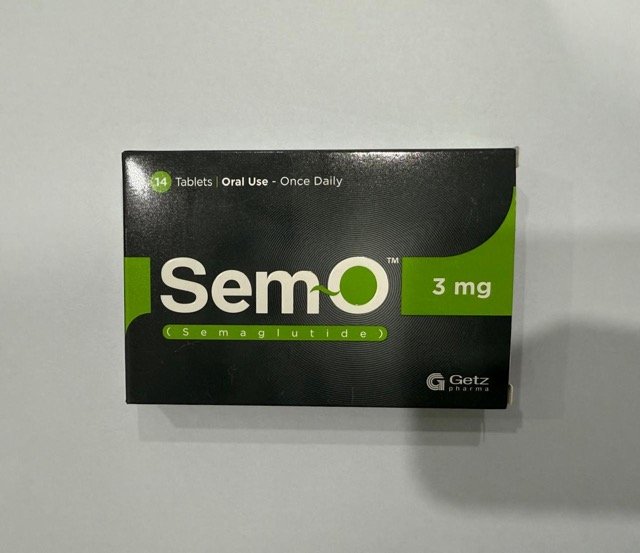Floxuridine, also known by its trade name FUDR, is a chemotherapy medication used in the treatment of various types of cancer. It is an antimetabolite, which means it interferes with the normal growth and replication of cells by disrupting their DNA synthesis. Floxuridine is primarily used in the treatment of gastrointestinal cancers, particularly colorectal cancer and pancreatic cancer.
Floxuridine is administered through intravenous infusion directly into the bloodstream. It gets incorporated into the DNA of rapidly dividing cells, interfering with their ability to replicate and ultimately leading to cell death. This makes it effective against rapidly dividing cancer cells.
Floxuridine (FUDR) is an antimetabolite drug that is administered intra-arterial for hepatic metastasis of colorectal carcinoma.
Floxuridine (FUDR) Indications:
- Colorectal cancer with hepatic metastases:
- Used for the palliative management of hepatic metastases of colorectal cancer (administered by continuous regional hepatic intra-arterial infusion) in select patients considered incurable by surgical resection or other means.
- Limitation of use:
- Patients with known disease extending beyond an area capable of a single artery infusion should (in most cases) be considered for systemic chemotherapy with other agents.
Floxuridine (FUDR) Dose in Adults
Floxuridine (FUDR) Dose in the treatment of colorectal cancer with hepatic metastases:
- Suggested Use (not the usual way but based on research):
- Combine it with dexamethasone and heparin.
- Give 0.25 mg for every kg of body weight every day.
- This is given directly into the liver's artery for 14 days straight.
- Do this process for 5 weeks, repeating it 6 times.
- Also, use it with two other drugs (fluorouracil and leucovorin). Start floxuridine 2 weeks after starting those drugs.
- Manufacturer's Suggested Dose:
- They say to give between 0.1 to 0.6 mg for every kg of body weight every day, non-stop.
- Most of the time, they suggest 0.4 to 0.6 mg for every kg of body weight every day.
- Keep giving it until the side effects become too much for the patient.
Use in Children:
Not indicated.
Pregnancy Risk Factor D
- Studies on animals show that floxuridine might harm the baby if taken during pregnancy.
- Drugs like floxuridine, which interfere with DNA creation, can cause birth defects in humans.
- If a woman can become pregnant, she should avoid getting pregnant while taking this drug.
Use of loxuridine while breastfeeding
- We don't know if floxuridine goes into breast milk.
- The maker of the drug advises not to breastfeed while using it.
Floxuridine Dose in Kidney Disease:
- The drug's maker doesn't give special dosing for people with kidney problems.
- Be very careful if using it in such cases.
Floxuridine (FUDR) Dose in Liver disease:
Floxuridine Dosage Adjustments:
- The drug's label doesn't give guidelines for dosage changes, so use it very carefully.
- For liver issues, there are two research sources (Floyd 2006 and Zalcberg 2004) that give recommendations.
Floyd 2006 Recommendations:
- If serum bilirubin or alkaline phosphatase is slightly elevated (1.2 times the normal limit), give 80% of the normal dose.
- If serum bilirubin is moderately elevated (1.5 times the limit) or there are other liver enzyme elevations, give 50% of the normal dose.
- For even higher liver enzyme values, there's no clear guidance.
Zalcberg 2004 Recommendations:
- For AST:
- If the starting value was low (≤50 units/L), and it rises:
- 3-4 times: give 80% of the dose.
- 4-5 times: give 50% of the dose.
- Above 5 times: stop the drug and only restart (at 50% dose) when levels decrease.
- If the starting value was higher (>50 units/L), reduce doses at slightly lower elevations.
- If the starting value was low (≤50 units/L), and it rises:
- For Alkaline Phosphatase:
- If the starting value was low (≤90 units/L) and it rises:
- 1.5-2 times: give 50% of the dose.
- Above 2 times: stop the drug and only restart (at 25% dose) when levels decrease.
- For higher starting values, reduce doses at slightly lower elevations.
- If the starting value was low (≤90 units/L) and it rises:
- For Total Bilirubin:
- If the starting value was low (≤1.2 mg/dL) and it rises:
- 1.5-2 times: give 50% of the dose.
- Above 2 times: stop the drug and only restart (at 25% dose) when levels decrease.
- For higher starting values, reduce doses at slightly lower elevations.
- If the starting value was low (≤1.2 mg/dL) and it rises:
Common Side Effects of Floxuridine (FUDR):
- Gastrointestinal:
- Diarrhea (May Be Dose Limiting)
- Stomatitis
- Hematologic & Oncologic:
- Anemia
- Bone Marrow Depression (Nadir: 7-10 Days; May Be Dose Limiting)
- Leukopenia
- Thrombocytopenia
Less Common Side Effects Of Floxuridine (FUDR):
- Dermatologic:
- Alopecia
- Dermatitis
- Localized Erythema
- Skin Hyperpigmentation
- Skin Photosensitivity
- Gastrointestinal:
- Anorexia
- Biliary Sclerosis
- Cholecystitis
- Hepatic:
- Jaundice
Contraindications to Floxuridine (FUDR):
- Poor nutritional states: When someone isn't getting enough nutrients, their body might not be strong enough to handle certain treatments or fight off illnesses.
- Depressed bone marrow function: The bone marrow makes blood cells. If its function is low, there's a risk of not producing enough blood cells. This can make certain treatments dangerous or less effective.
- Potentially serious infections: If someone already has a serious infection, certain treatments might make it worse or put the person at higher risk for complications.
Warnings and precautions
Suppression of bone marrow
- Floxuridine can lead to serious blood-related side effects.
- It often causes low red blood cells (anemia), white blood cells (leukopenia), and platelets (thrombocytopenia).
- The lowest blood cell counts usually happen around 7 to 10 days after starting the treatment.
- If the counts drop too much (especially white cells or platelets), the medicine might need to be stopped.
Cardiovascular toxicities:
- Floxuridine can cause heart problems, like reduced blood flow to the heart muscle.
- If this happens, stop the medicine immediately.
Gastrointestinal toxicities:
- Floxuridine can cause stomach and gut problems.
- Stop the medicine if:
- Mouth sores (stomatitis) or throat inflammation (esophagopharyngitis) appear.
- There's uncontrolled vomiting, diarrhea, or ulcers/bleeding in the gut.
Hemorrhage
- Floxuridine can cause bleeding.
- Stop the medicine if bleeding happens anywhere in the body.
Toxicity
- Floxuridine can have harmful effects.
- Watch patients closely for signs.
- People at higher risk for severe problems:
- Those who have had certain risk factors.
- Those who had radiation treatment in the pelvic area.
- Those who took certain other cancer drugs before.
Hepatic impairment
- Be very careful when using Floxuridine in patients with liver problems.
Renal impairment
- Be very careful when using Floxuridine in patients with kidney problems.
Floxuridine: Drug Interaction
|
Risk Factor C (Monitor therapy) |
|
|
Chloramphenicol (Ophthalmic) |
May enhance the adverse/toxic effect of Myelosuppressive Agents. |
|
Cimetidine |
May increase serum concentrations of the active metabolite(s) of Floxuridine. Specifically, concentrations of fluorouracil may be increased. |
|
CloZAPine |
Myelosuppressive Agents may enhance the adverse/toxic effect of CloZAPine. Specifically, the risk for neutropenia may be increased. |
|
Coccidioides immitis Skin Test |
Immunosuppressants may diminish the diagnostic effect of Coccidioides immitis Skin Test. |
|
Denosumab |
May enhance the adverse/toxic effect of Immunosuppressants. Specifically, the risk for serious infections may be increased. |
|
Folic Acid |
May enhance the adverse/toxic effect of Floxuridine. |
|
Haloperidol |
QT-prolonging Agents (Indeterminate Risk - Caution) may enhance the QTcprolonging effect of Haloperidol. |
|
Leucovorin Calcium-Levoleucovorin |
May enhance the adverse/toxic effect of Floxuridine. |
|
MetroNIDAZOLE (Systemic) |
May increase serum concentrations of the active metabolite(s) of Floxuridine. Specifically, serum concentrations of fluorouracil may be increased. |
|
Ocrelizumab |
May enhance the immunosuppressive effect of Immunosuppressants. |
|
Pidotimod |
Immunosuppressants may diminish the therapeutic effect of Pidotimod. |
|
Promazine |
May enhance the myelosuppressive effect of Myelosuppressive Agents. |
|
QT-prolonging Agents (Highest Risk) |
QT-prolonging Agents (Indeterminate Risk - Caution) may enhance the QTc-prolonging effect of QT-prolonging Agents (Highest Risk). Management: Monitor for QTc interval prolongation and ventricular arrhythmias when these agents are combined. Patients with additional risk factors for QTc prolongation may be at even higher risk. |
|
Siponimod |
Immunosuppressants may enhance the immunosuppressive effect of Siponimod. |
|
Tertomotide |
Immunosuppressants may diminish the therapeutic effect of Tertomotide. |
|
Trastuzumab |
May enhance the neutropenic effect of Immunosuppressants. |
|
Risk Factor D (Consider therapy modification) |
|
|
Baricitinib |
Immunosuppressants may enhance the immunosuppressive effect of Baricitinib. Management: Use of baricitinib in combination with potent immunosuppressants such as azathioprine or cyclosporine is not recommended. Concurrent use with antirheumatic doses of methotrexate or nonbiologic disease modifying antirheumatic drugs (DMARDs) is permitted. |
|
Echinacea |
May diminish the therapeutic effect of Immunosuppressants. |
|
Fingolimod |
Immunosuppressants may enhance the immunosuppressive effect of Fingolimod. Management: Avoid the concomitant use of fingolimod and other immunosuppressants when possible. If combined, monitor patients closely for additive immunosuppressant effects (eg, infections). |
|
Fosphenytoin |
Floxuridine may increase the serum concentration of Fosphenytoin. |
|
Leflunomide |
Immunosuppressants may enhance the adverse/toxic effect of Leflunomide. Specifically, the risk for hematologic toxicity such as pancytopenia, agranulocytosis, and/or thrombocytopenia may be increased. Management: Consider not using a leflunomide loading dose in patients receiving other immunosuppressants. Patients receiving both leflunomide and another immunosuppressant should be monitored for bone marrow suppression at least monthly. |
|
Lenograstim |
Antineoplastic Agents may diminish the therapeutic effect of Lenograstim. Management: Avoid the use of lenograstim 24 hours before until 24 hours after the completion of myelosuppressive cytotoxic chemotherapy. |
|
Lipegfilgrastim |
Antineoplastic Agents may diminish the therapeutic effect of Lipegfilgrastim. Management: Avoid concomitant use of lipegfilgrastim and myelosuppressive cytotoxic chemotherapy. Lipegfilgrastim should be administered at least 24 hours after the completion of myelosuppressive cytotoxic chemotherapy. |
|
Nivolumab |
Immunosuppressants may diminish the therapeutic effect of Nivolumab. |
|
Palifermin |
May enhance the adverse/toxic effect of Antineoplastic Agents. Specifically, the duration and severity of oral mucositis may be increased. Management: Do not administer palifermin within 24 hours before, during infusion of, or within 24 hours after administration of myelotoxic chemotherapy. |
|
Phenytoin |
Floxuridine may increase the serum concentration of Phenytoin. |
|
Roflumilast |
May enhance the immunosuppressive effect of Immunosuppressants. |
|
Sipuleucel-T |
Immunosuppressants may diminish the therapeutic effect of Sipuleucel-T. Management: Evaluate patients to see if it is medically appropriate to reduce or discontinue therapy with immunosuppressants prior to initiating sipuleucel-T therapy. |
|
Tofacitinib |
Immunosuppressants may enhance the immunosuppressive effect of Tofacitinib. Management: Concurrent use with antirheumatic doses of methotrexate or nonbiologic disease modifying antirheumatic drugs (DMARDs) is permitted, and this warning seems particularly focused on more potent immunosuppressants. |
|
Vaccines (Inactivated) |
Immunosuppressants may diminish the therapeutic effect of Vaccines (Inactivated). Management: Vaccine efficacy may be reduced. Complete all age-appropriate vaccinations at least 2 weeks prior to starting an immunosuppressant. If vaccinated during immunosuppressant therapy, revaccinate at least 3 months after immunosuppressant discontinuation. |
|
Vitamin K Antagonists (eg, warfarin) |
Floxuridine may increase the serum concentration of Vitamin K Antagonists. Management: Monitor INR and signs/symptoms of bleeding closely when starting or stopping floxuridine in a patient receiving a vitamin K antagonist. Anticoagulant dose adjustment will likely be necessary. |
|
Risk Factor X (Avoid combination) |
|
|
BCG (Intravesical) |
Immunosuppressants may diminish the therapeutic effect of BCG (Intravesical). |
|
BCG (Intravesical) |
Myelosuppressive Agents may diminish the therapeutic effect of BCG (Intravesical). |
|
Cladribine |
May enhance the immunosuppressive effect of Immunosuppressants. |
|
Cladribine |
May enhance the myelosuppressive effect of Myelosuppressive Agents. |
|
Cladribine |
Agents that Undergo Intracellular Phosphorylation may diminish the therapeutic effect of Cladribine. |
|
Deferiprone |
Myelosuppressive Agents may enhance the neutropenic effect of Deferiprone. |
|
Dipyrone |
May enhance the adverse/toxic effect of Myelosuppressive Agents. Specifically, the risk for agranulocytosis and pancytopenia may be increased |
|
Gimeracil |
May increase serum concentrations of the active metabolite(s) of Floxuridine. Specifically, gimeracil may increase concentrations of fluorouracil. |
|
Natalizumab |
Immunosuppressants may enhance the adverse/toxic effect of Natalizumab. Specifically, the risk of concurrent infection may be increased. |
|
Pimecrolimus |
May enhance the adverse/toxic effect of Immunosuppressants. |
|
Tacrolimus (Topical) |
May enhance the adverse/toxic effect of Immunosuppressants. |
|
Vaccines (Live) |
Immunosuppressants may enhance the adverse/toxic effect of Vaccines (Live). Immunosuppressants may diminish the therapeutic effect of Vaccines (Live). Management: Avoid use of live organism vaccines with immunosuppressants; live-attenuated vaccines should not be given for at least 3 months after immunosuppressants. |
Monitoring parameters:
Blood Counts:
- Check Complete Blood Count (CBC) for red and white cells.
- Check platelet count for clotting ability.
Liver Health:
- Look at bilirubin levels (measures liver function).
- Check alkaline phosphatase (another liver test).
- Monitor transaminases (yet another liver function test).
Signs of Issues to Watch For:
- Mouth/throat sores or inflammation (stomatitis/esophagopharyngitis).
- Stomach ulcers or bleeding.
- Any unusual bleeding (hemorrhage).
- Throwing up (vomiting).
- Watery stools (diarrhea).
How to administer Floxuridine (FUDR)?
Method:
- Use an infusion pump.
- Give the drug directly into the liver's artery (hepatic intra-arterial infusion).
Mechanism of action of Floxuridine (FUDR):
- When given directly into an artery, Floxuridine changes into another drug called fluorouracil.
- This makes it work like fluorouracil.
- It blocks an enzyme called thymidylate synthetase.
- This stops the making of DNA and RNA, which cells need to grow and divide.
Metabolism:
- Process happens in the liver.
- Active Forms: It becomes two active forms:
- Floxuridine monophosphate (FUDR-MP).
- Fluorouracil.
- Inactive Forms: Also changes into inactive forms like:
- Urea.
- Carbon monoxide (CO).
- Other compounds with long names like α-fluoro-β-alanine, α-fluoro-β-guanidopropionic acid, α-fluoro-β-ureidopropionic acid, and dihydrofluorouracil.
How It's Removed:
- Mostly through urine.
- Some is breathed out as gases (like CO).
International Brand Names of Floxuridine:
- FUDR
Floxuridine Brand Names in Pakistan:
Not available.



.jpeg)



